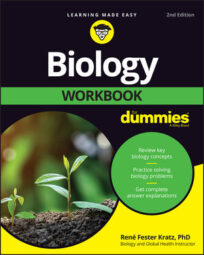Muscle tissues are extremely important to your body — and not just because they help you look good at the pool. Muscles do many things to keep you alive and going strong:
Muscles allow you to stand upright. Your muscles contract so that you can push against the surface of the Earth, defying gravity to stand upright.
Muscles make it possible for you to move. Your muscles control every little movement that your body performs, from the smallest blink to the largest leap.
Muscles allow you to digest your food. Muscles all along your digestive tract squeeze to keep food moving along in a process called peristalsis.
Muscles affect the rate of blood flow. Blood vessels expand and contract using their muscle tissue, and your heart muscle contracts to move blood through your circulatory system.
Muscles help to maintain normal body temperature. The chemical reactions inside muscle cells and the sliding of muscle filaments both produce heat that helps maintain your body temperature.
Muscles hold your skeleton together. The ligaments and tendons at the ends of your muscles wrap around joints, holding them together.
Muscle tissues are made up of cells called muscle fibers (see the figure). Each muscle fiber contains many myofibrils — the parts of the muscle fiber that contract. The myofibrils line up right next to each other, giving muscles a striped, or striated, appearance. Myofibrils contract because of the sliding action of two filamentous cytoskeletal proteins, called actin and myosin:
Actin filaments, or thin filaments, consist of two strands of actin wound around each other.
Myosin filaments, or thick filaments, contain groups of myosin. Myosin filaments have bulbous ends called myosin heads; in muscle, multiple strands of myosin arrange with their heads pointed in opposite directions so that both ends of thick filaments look bulbous.
Thin and thick filaments are organized into repeating units called sarcomeres. Dark lines called Z-lines mark off the boundaries of each sarcomere. Thin filaments attach to the Z-lines at both ends of the sarcomere, while thick filaments are unattached. Each myofibril contains thousands of sarcomeres.
Three types of muscle tissue exist within your body:
Cardiac muscle makes up the heart. The fibers of cardiac muscle are branched, cylindrical cells that have one nucleus and striations. Cardiac muscle contraction is totally involuntary, meaning it occurs without nervous stimulation and doesn’t require conscious control.
Smooth muscle lines the walls of internal organs that are hollow, like the stomach, bladder, intestines, and lungs. The fibers of smooth muscle tissue are spindle-shaped and have one nucleus. Smooth muscle gets its name from the fact that it doesn’t have horizontal striations like other muscle tissues (so it looks smooth).
In smooth muscle, the fibers form sheets of tissue by lining up in parallel lines. Smooth muscle contraction occurs involuntarily and more slowly than skeletal muscle contraction, which means smooth muscle can stay contracted longer than skeletal muscle and not fatigue as easily.
Skeletal muscle is probably what you think of when you picture a muscle. The cylindrical fibers (cells) of skeletal muscle have many nuclei and striations. Skeletal muscle is the only type of muscle under voluntary control through the nervous system, which means you can decide when you want to contract a skeletal muscle.
![Skeletal muscle structure. [Credit: Illustration by Kathryn Born, M.A.]](https://www.dummies.com/wp-content/uploads/362047.image0.jpg) Credit: Illustration by Kathryn Born, M.A.Skeletal muscle structure.
Credit: Illustration by Kathryn Born, M.A.Skeletal muscle structure.
Use the terms that follow to answer the following questions and identify which muscle type has each characteristic.
a. Cardiac muscle
b. Smooth muscle
c. Skeletal muscle
This muscle type is under voluntary control.
This muscle type has cells with multiple nuclei per cell (fiber).
This muscle type controls digestion.
This muscle type is only found in one organ in the body.
This muscle type lacks obvious striations.
Put the following terms in order from largest to smallest. Then circle the word that represents one muscle cell.
Myofibril
Skeletal muscle tissue
Muscle fiber
Actin (thin) filament
Sarcomere
The following are the answers to the practice questions.
The answer is c. Skeletal muscle.
The answer is c. Skeletal muscle.
The answer is b. Smooth muscle.
The answer is a. Cardiac muscle (found only in the heart!).
The answer is b. Smooth muscle.
The answer is 2. Skeletal muscle tissue; 3. Muscle fiber; 1. Myofibril; 5. Sarcomere; 4. Actin (thin) filament. You should have circled 3. Muscle fiber because that’s the name for a muscle cell.

